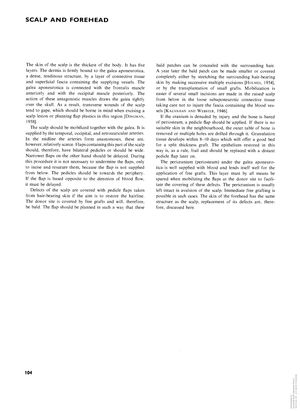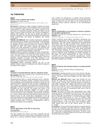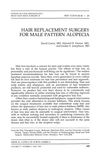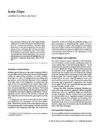Surgical Strategies for Scalp and Forehead Injuries and Hair Loss
April 2015
in “
S. Karger AG eBooks
”

TLDR The document concludes that successful surgical repair of scalp and forehead issues requires careful planning and various techniques depending on the injury or defect size.
The document from April 16, 2015, discusses surgical strategies for treating injuries, defects, and hair loss on the scalp and forehead. It outlines the scalp's anatomical structure and the challenges in surgical repair due to the tension from underlying muscles. Techniques such as the use of hair-bearing pedicle flaps, free grafts, and cylindrical punch grafts are described for hairline restoration and baldness correction. For total scalp avulsion, split-thickness skin grafting is recommended, and the avulsed scalp can be used for grafting. The document also covers the use of transabdominal flaps for extensive scalp defects and pedicle flaps from the forearm or upper arm for significant forehead defects. Smaller forehead defects can be repaired by rotating a flap from the hair-bearing scalp. The importance of the anterior hairline in cosmetic reconstruction is emphasized, and the document also addresses the need for careful planning and immobilization techniques during these complex procedures.




